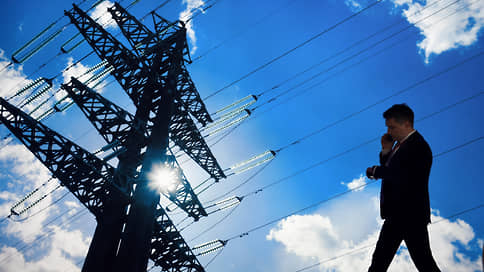Electricity according to standards – Newspaper Kommersant No. 52 (7497) dated 03/28/2023
[ad_1]

The FAS is again trying to unify the costs of power grid companies in the regions: now the service promises to introduce a “reference” level of costs from January 1, 2024. Such a measure, according to the regulator, will force companies to either cut costs or give assets to more efficient players. The FAS expects cost reductions in at least 16 regions, which could lead to tariff cuts. However, analysts and market participants are asking to disclose the methodology for calculating benchmarks, because, on the contrary, they are afraid of an increase in tariffs for businesses.
FAS presented a new concept of reference regulation in the power grid complex. The service is ready to establish a “reference” level of operating costs (OPEX) for distribution grid companies in the regions from January 1, 2024. The baseline will be set for at least three years and will be annually indexed for inflation.
The FAS promised to introduce benchmarks for OPEX in networks from 2018, but has always faced criticism from the government. Now the service hopes to gradually transfer all companies to the new regulation from 2026, follows from the materials for the conference on tariff regulation. High-spending organizations “will be forced to either increase efficiency or transfer assets to more efficient organizations,” the filings say. The FAS explained to Kommersant that now the difference in costs for TSOs in one region can vary significantly, and the new methodology will equalize costs. Standards are planned to be set for the constituent entities of the Russian Federation and types of equipment.
Operating expenses (mainly salaries and repair costs) average about 40% (rarely up to 50%) in the revenue of a grid company, says Sergey Sasim from the Institute for Economics and Regulation of Infrastructure Industries at the National Research University Higher School of Economics. In 2022, the total revenue of grid companies in the Russian Federation is 1.15 trillion rubles.
According to FAS forecasts, in at least 16 regions of Russia, the OPEX of grid companies will decrease, which may lead to a reduction in tariffs. The largest reduction in OPEX is expected in the Kemerovo region (minus 15%), and the smallest – in the Vladimir and Astrakhan regions (minus 1%). The total revenue of networks in the regions indicated by the service is only about 24% of the revenue of all companies in the Russian Federation, data for other regions are not presented, Sergei Sasim notes. The analyst emphasizes that the FAS did not disclose the numerical data of the reference costs and the methodology for calculating them, so it is difficult to judge the impact on tariffs.
“Standards are proposed to be set more on the basis of averaging current costs with rather primitive differentiation than on the basis of best practices,” they say in the Energy Consumers Community. “The proposed use of standards directly, and not as a comparative base, is very risky and requires the highest qualification of tariff authorities. The full picture of the implications for the economy is not presented.” The standards have already led to a multiple increase in payments to power supply companies, they add, and there are no guarantees that this story will not repeat itself with network tariffs.
Rosseti expects that the introduction of benchmark costs will lead to the exclusion of a subjective approach to assessing the costs of maintaining networks, simplify and increase the transparency of tariff regulation, and also have a positive effect on improving the reliability and quality of energy supply.
RusHydro (which manages networks in the Far East) generally supports the introduction of standards. But the state holding believes that the project needs to be improved “in terms of making the mechanism flexible so that it can quickly respond to external changes” (actual increase in equipment prices or damage from natural disasters).
“The use of reference costs should be linked to the system of quality control and reliability of services,” Sergei Sasim points out. “Otherwise, organizations will receive an incentive to translate the increase in costs into net profit growth, for example, by reducing repairs. In addition, the regulator wants to index the benchmark OPEX to inflation without taking into account decreasing coefficients of efficiency and elasticity, although it is more logical to restrain the growth of costs in order to stimulate companies to be more efficient.” There is no understanding yet, he adds, what the regulator will do if double-digit inflation repeats.
[ad_2]
Source link





